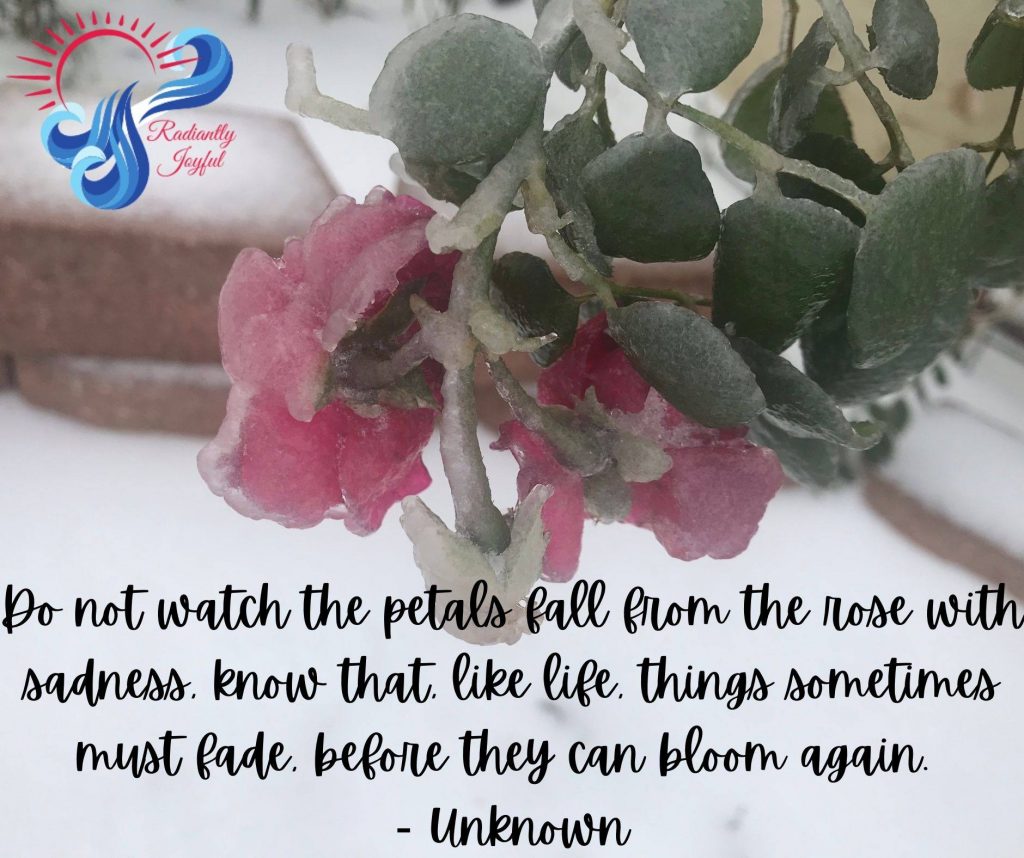Waves of Grief
In recent weeks, I once again find myself in a place of grieving. Old losses surge like tidal waves leaving sadness, anger, emptiness, and anxiety behind. The cleanup continues with each aftershock. Eventually, maybe the waves become smaller and further apart, but not necessarily more manageable. For me, the biggest waves come with meaning dates or an onslaught of difficult situations. In this surge, I felt compelled to explore grief once again, along with its implications, impact, and inclusion in a full and abundant life.
Many people are familiar with the five stages of grief, introduced in 1969 by Elisabeth Kübler-Ross. As a review, those five stages are denial, anger, bargaining, depression, and acceptance. However, what the majority of people do not realize is that these stages came from observing terminally ill patients coming to grips with their own impending death. The mourning process for those left behind after a loved one’s death might have similar categories, but in reality, is a completely different process. Another work, The Truth About Grief: The Myth of Its Five Stages and the New Science of Loss by Ruth Davis Konigsberg, addressed the feelings of the ones living with grief.
Two years ago, after my grandmother died, I found myself more accepting and at peace rather than sad or angry about her death. She lived a full life. She dedicated that life to Christian service. I wanted to find information, outside of the Bible, on how Christians are able to grieve differently.
I also found myself remembering previous losses. While some may call her theories into question, even Kübler-Ross admitted that grief was not a linear or simple process. When I received word about my Grandma, part of me went back in time 13 years to my college apartment, receiving the same news about my Grandpa. That loss came as a greater shock. Even though he’d been in the hospital due to complications following heart surgery, he seemed to be recovering. He was even talking to my grandmother moments before his death. Time and distance kept me from visiting them as often as I would have liked, and their health kept them from visiting me. Other memories and losses spiraled from there.
Grief is not a simple event. The process does not follow steps or a predictable pattern. Everyone grieves differently. No one’s way is more right or more wrong. The sadness of grief may sneak up on you with a memory, hearing a song, or looking at a photograph. In a moment of excitement, you may want to share your good news with the departed loved one. I know many people who get all the way through dialing the phone number before they realize the voice they long for will not greet them.
Yet people are resilient, oftentimes more capable than they realize. This is true even in working through a loss. While grief may be ongoing in some ways, it is not hopeless. The stages of grief model can leave a person feeling more hopeless in their loss. Realizing and accepting a loss and moving forward is necessary, even when it is difficult. My miscarriage taught me this. Shortly after we moved overseas, just at the end of the first trimester, I lost a baby. I had a three-year-old to care for, my husband was preparing for an upcoming deployment, and our support system was across the ocean. My faith and family are the sources of my strength. We found a church home whose members became our family during our time overseas. Their support helped us through those first very difficult months overseas.
When you are grieving, grieve in the way that is best for you. Find a support system that can help you find your resilient strength. Do not worry about progressing through stages or doing things in a certain order or pattern. Do make healthy choices, even on the days when getting out of bed is the biggest challenge you overcome. If necessary, find a professional therapist to help you in the process. You never have to walk through your grief alone.
